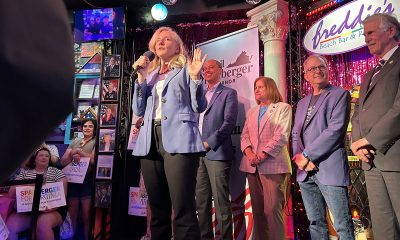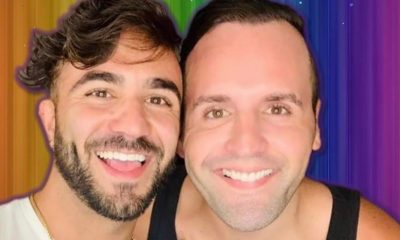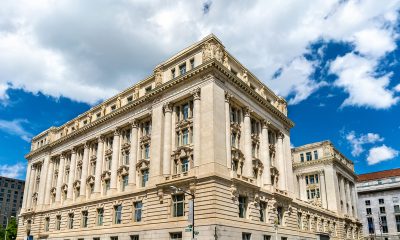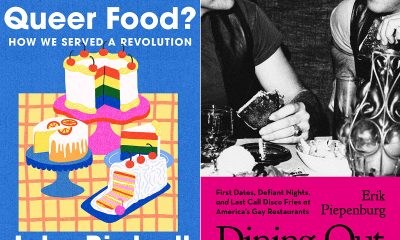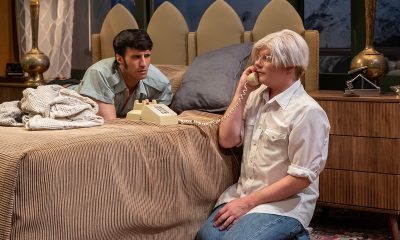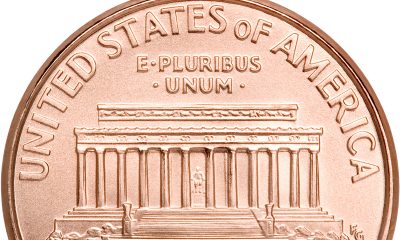National
Gay troops come out after demise of ‘Don’t Ask’
Troops no longer fear discharge under military’s gay ban
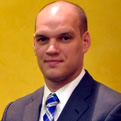
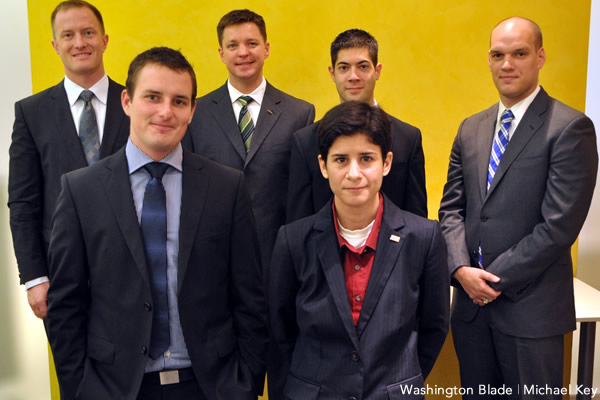
(from left) Jonathan Hopkins, Ty Walrod, Zac Mathews, Sarah Pezzat, Jonathan Mills and Josh Seefried.
Gay service members are beginning to make their sexual orientation known now that the 18-year-old law prohibiting open service known as “Don’t Ask, Don’t Tell” has finally been lifted from the books.
Troops affiliated with OutServe, an organization of active duty LGBT military members, touted the importance of the change during a news conference Tuesday at the Human Rights Campaign headquarters in D.C.
1st Lt. Josh Seefried, a New Jersey-based finance director for the Air Force and OutServe’s co-founder and co-director, said being able to take part fully in the military family was particularly important to him.
“That’s what the military brags about so much is having that aspect of being part of the family, being part of the team,” Seefried said. “I almost resented the Air Force for not giving me that opportunity to be part of that team, not being able to bring someone to an event. Now I feel like I can go back to work and I can be part of that team now and actually be honest.”
Under “Don’t Ask, Don’t Tell,” Seefried had gone by the alias J.D. Smith to avoid being expelled from military as he headed his 4,300-member LGBT organization. Now that the gay ban has been lifted, he’s free to be public with his real name as a gay airman.
Lt. Cmdr. Zac Matthews, a Coast Guard helicopter pilot who’s served on both U.S. coasts as well as the Alaska and Bering Sea, similarly said he feels like “part of the family again.”
“For so many years, it’s been my partner and I on the outside looking at service members and their spouses participating in social events, being part of a network, getting together after work and on the weekends,” Matthews said. “For the first time today, I feel as though we’re part of this big, at least in my case, a Coast Guard family — and that’s a big deal to me.”
In addition to participating in OutServe, Matthews chairs Service Academy Gay & Lesbian Alumni, or SAGALA, which encompasses members from all five service academies. He graduated from the U.S. Merchant Marine Academy in 2000.
Capt. Sarah Pezzat, a D.C.-based Marine Corps reservist who served in operations in Haiti, Iraq, and Somalia, said the end to “Don’t Ask, Don’t Tell” makes Tuesday feels markedly different than previous days.
“For me, it feels different to me because I’ve been waiting for this day for a long time,” Pezzat said. “I can post about it on Facebook, I can tell my co-workers if I want to what I did last weekend, things like that.
In 2007, Pezzat left active duty to become a police officer for the D.C. Metropolitan Police Department. This year, she volunteered for an active duty position in logistics at the Pentagon’s Marine Corps headquarters and is hoping to deploy again to Afghanistan.
Still, Pezzat said the demise of “Don’t Ask, Don’t Tell” isn’t as significant for her straight counterparts. She said one of her colleagues mentioned to her that another service member came out after the ban was lifted, but she hadn’t heard anything else.
Tech. Sgt. Jonathan Mills, a D.C.-based radio frequency transmission technician for the Air Force, said the end to “Don’t Ask, Don’t Tell” is a “huge weight lifted” from his shoulders.
“Waking up this morning, I thought to myself no more do I have to constantly worry about ending my career because of this,” Mills said. “I don’t have to worry about lying to anyone and compromising. To me, there’s a fundamental difference.”
Mills is executive editor for OutServe Magazine. The latest edition of the online publication showcases 101 openly gay service members who have come out in the wake of the end of “Don’t Ask, Don’t Tell.”
Also present at the news conference was Jonathan Hopkins, who’s affiliated with OutServe, and Tyler Walrod, the civilian co-chair of OutServe. The only non-military member of the 4,300-large group, Walrod works on technology in San Francisco.
What do gay service members see as the next priority for the LGBT rights movement now that “Don’t Ask, Don’t Tell” is off the books. Those present at the HRC presser said they wanted to see action on partner benefits that would put gay troops on the same footing as the same footing as their straight counterparts.
Seefried said the No. 1 thing that people are concerned about in the U.S. military is partner because he said they’re “everything for us.”
“I’m in a military-military relationship and I’m set to move in the next seven months without a chance of having a joint spouse assignment,” Seefried said. “Those relationships just get torn apart. I think that that’s something most people in the military — everyone’s going to be affected.”
The Defense of Marriage Act, which prohibits federal recognition of same-sex marriage, prevents gay service members from obtaining certain partner benefits — such as health benefits. However, the Pentagon could take administrative action to enable other benefits, such as those related to housing and legal services.
Despite the change, Matthews said he doesn’t believe the focus of gay service members will change much beyond doing the jobs to which they’ve been assigned.
“I think there’s definitely going to be a lot of people in a good mood celebrating,” Matthews said. “I think that’s a given. But I think that the bottom line is we’re all professionals and we all know that we come to work to do our job; we don’t come to work to be gay. We just are gay. And the bottom line is: we’ve been taught to work as a team to accomplish the mission.”
CORRECTION: An earlier version of this article incorrectly stated Matthews chairs a U.S. Merchant Marine Academy gay alumni group. The Washington Blade regrets the error.
Federal Government
UPenn erases Lia Thomas’s records as part of settlement with White House
University agreed to ban trans women from women’s sports teams

In a settlement with the Trump-Vance administration announced on Tuesday, the University of Pennsylvania will ban transgender athletes from competing and erase swimming records set by transgender former student Lia Thomas.
The U.S. Department of Education’s Office for Civil Rights found the university in violation of Title IX, the federal rights law barring sex based discrimination in educational institutions, by “permitting males to compete in women’s intercollegiate athletics and to occupy women-only intimate facilities.”
The statement issued by University of Pennsylvania President J. Larry Jameson highlighted how the law’s interpretation was changed substantially under President Donald Trump’s second term.
“The Department of Education OCR investigated the participation of one transgender athlete on the women’s swimming team three years ago, during the 2021-2022 swim season,” he wrote. “At that time, Penn was in compliance with NCAA eligibility rules and Title IX as then interpreted.”
Jameson continued, “Penn has always followed — and continues to follow — Title IX and the applicable policy of the NCAA regarding transgender athletes. NCAA eligibility rules changed in February 2025 with Executive Orders 14168 and 14201 and Penn will continue to adhere to these new rules.”
Writing that “we acknowledge that some student-athletes were disadvantaged by these rules” in place while Thomas was allowed to compete, the university president added, “We recognize this and will apologize to those who experienced a competitive disadvantage or experienced anxiety because of the policies in effect at the time.”
“Today’s resolution agreement with UPenn is yet another example of the Trump effect in action,” Education Secretary Linda McMahon said in a statement. “Thanks to the leadership of President Trump, UPenn has agreed both to apologize for its past Title IX violations and to ensure that women’s sports are protected at the university for future generations of female athletes.”
Under former President Joe Biden, the department’s Office of Civil Rights sought to protect against anti-LGBTQ discrimination in education, bringing investigations and enforcement actions in cases where school officials might, for example, require trans students to use restrooms and facilities consistent with their birth sex or fail to respond to peer harassment over their gender identity.
Much of the legal reasoning behind the Biden-Harris administration’s positions extended from the 2020 U.S. Supreme Court case Bostock v. Clayton County, which found that sex-based discrimination includes that which is based on sexual orientation or gender identity under Title VII rules covering employment practices.
The Trump-Vance administration last week put the state of California on notice that its trans athlete policies were, or once were, in violation of Title IX, which comes amid the ongoing battle with Maine over the same issue.
New York
Two teens shot steps from Stonewall Inn after NYC Pride parade
One of the victims remains in critical condition
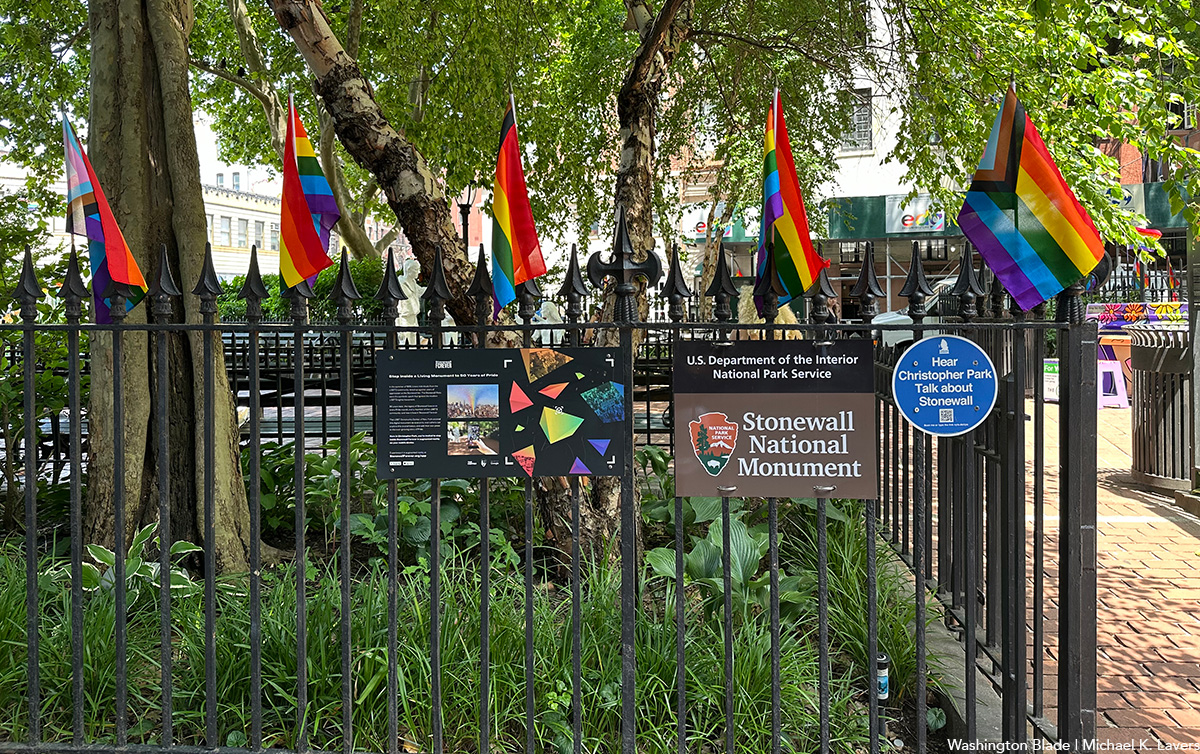
On Sunday night, following the annual NYC Pride March, two girls were shot in Sheridan Square, feet away from the historic Stonewall Inn.
According to an NYPD report, the two girls, aged 16 and 17, were shot around 10:15 p.m. as Pride festivities began to wind down. The 16-year-old was struck in the head and, according to police sources, is said to be in critical condition, while the 17-year-old was said to be in stable condition.
The Washington Blade confirmed with the NYPD the details from the police reports and learned no arrests had been made as of noon Monday.
The shooting took place in the Greenwich Village neighborhood of Manhattan, mere feet away from the most famous gay bar in the city — if not the world — the Stonewall Inn. Earlier that day, hundreds of thousands of people marched down Christopher Street to celebrate 55 years of LGBTQ people standing up for their rights.
In June 1969, after police raided the Stonewall Inn, members of the LGBTQ community pushed back, sparking what became known as the Stonewall riots. Over the course of two days, LGBTQ New Yorkers protested the discriminatory policing of queer spaces across the city and mobilized to speak out — and throw bottles if need be — at officers attempting to suppress their existence.
The following year, LGBTQ people returned to the Stonewall Inn and marched through the same streets where queer New Yorkers had been arrested, marking the first “Gay Pride March” in history and declaring that LGBTQ people were not going anywhere.
New York State Assemblywoman Deborah Glick, whose district includes Greenwich Village, took to social media to comment on the shooting.
“After decades of peaceful Pride celebrations — this year gun fire and two people shot near the Stonewall Inn is a reminder that gun violence is everywhere,” the lesbian lawmaker said on X. “Guns are a problem despite the NRA BS.”
New York
Zohran Mamdani participates in NYC Pride parade
Mayoral candidate has detailed LGBTQ rights platform

Zohran Mamdani, the candidate for mayor of New York City who pulled a surprise victory in the primary contest last week, walked in the city’s Pride parade on Sunday.
The Democratic Socialist and New York State Assembly member published photos on social media with New York Attorney General Letitia James, telling followers it was “a joy to march in NYC Pride with the people’s champ” and to “see so many friends on this gorgeous day.”
“Happy Pride NYC,” he wrote, adding a rainbow emoji.
Mamdani’s platform includes a detailed plan for LGBTQ people who “across the United States are facing an increasingly hostile political environment.”
His campaign website explains: “New York City must be a refuge for LGBTQIA+ people, but private institutions in our own city have already started capitulating to Trump’s assault on trans rights.
“Meanwhile, the cost of living crisis confronting working class people across the city hits the LGBTQIA+ community particularly hard, with higher rates of unemployment and homelessness than the rest of the city.”
“The Mamdani administration will protect LGBTQIA+ New Yorkers by expanding and protecting gender-affirming care citywide, making NYC an LGBTQIA+ sanctuary city, and creating the Office of LGBTQIA+ Affairs.”

